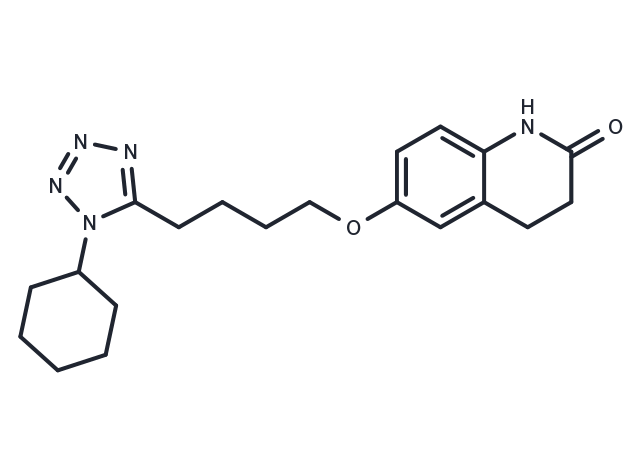Powder: -20°C for 3 years | In solvent: -80°C for 1 year


Cilostazol (OPC 21) is a Phosphodiesterase 3 Inhibitor. The mechanism of action of cilostazol is as a Phosphodiesterase 3 Inhibitor.

| Pack Size | Availability | Price/USD | Quantity |
|---|---|---|---|
| 25 mg | In stock | $ 39.00 | |
| 50 mg | In stock | $ 53.00 | |
| 100 mg | In stock | $ 77.00 | |
| 1 mL * 10 mM (in DMSO) | In stock | $ 57.00 |



| Description | Cilostazol (OPC 21) is a Phosphodiesterase 3 Inhibitor. The mechanism of action of cilostazol is as a Phosphodiesterase 3 Inhibitor. |
| Targets&IC50 | PDE3:0.2 μM |
| In vivo | Cilostazol induces relaxation of vascular smooth muscle and causes vasodilation. It inhibits the expression of monocyte chemotactic protein-1 (MCP-1) induced by cytokines. Additionally, Cilostazol reduces plasma triglycerides and increases high-density lipoprotein (HDL) levels. The vasodilatory and antithrombotic effects of Cilostazol are primarily due to the inhibition of phosphodiesterase 3 (PDE3) and the subsequent elevation of intracellular cyclic adenosine monophosphate (cAMP) levels. It also inhibits platelet aggregation and adenosine uptake. |
| Synonyms | OPC 21, OPC 13013 |
| Molecular Weight | 369.46 |
| Formula | C20H27N5O2 |
| CAS No. | 73963-72-1 |
Powder: -20°C for 3 years | In solvent: -80°C for 1 year
DMSO: 18.5 mg/mL (50 mM)
Ethanol: 3.7 mg/mL (10 mM)
You can also refer to dose conversion for different animals. More
bottom
Please see Inhibitor Handling Instructions for more frequently ask questions. Topics include: how to prepare stock solutions, how to store products, and cautions on cell-based assays & animal experiments, etc.
Cilostazol 73963-72-1 Autophagy Metabolism PDE OPC-21 late fibrogenesis OPC-13013 cardiovascular inhibit OPC21 OPC 21 injury hepatic OPC13013 Phosphodiesterase (PDE) OPC 13013 Inhibitor inhibitor
